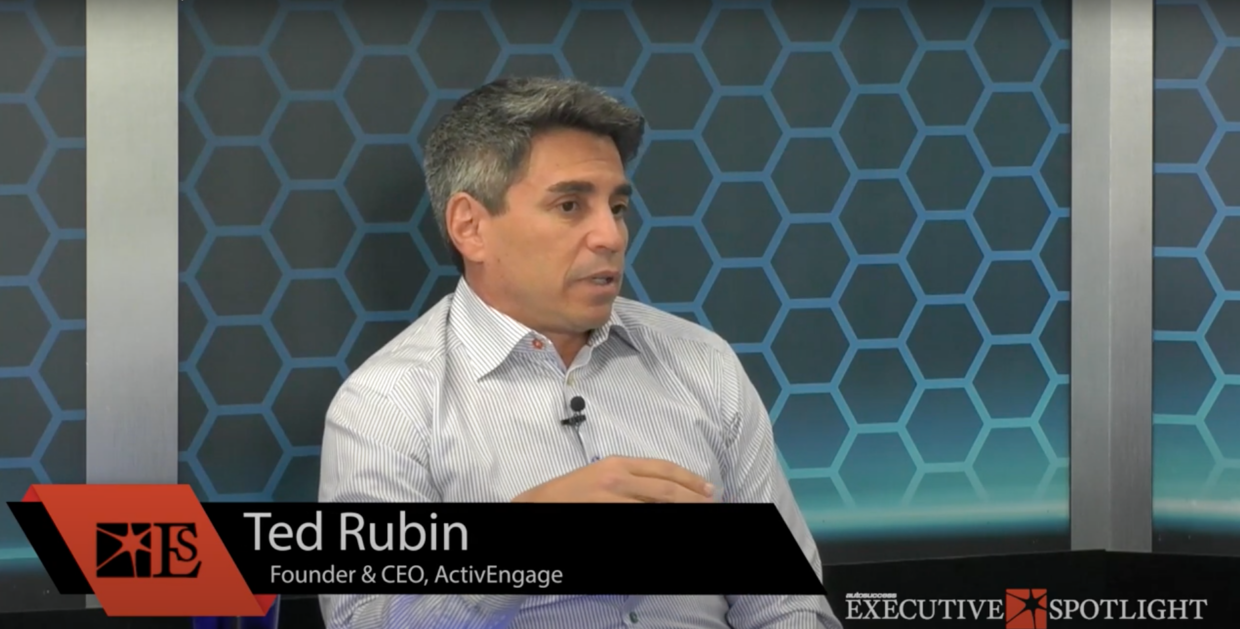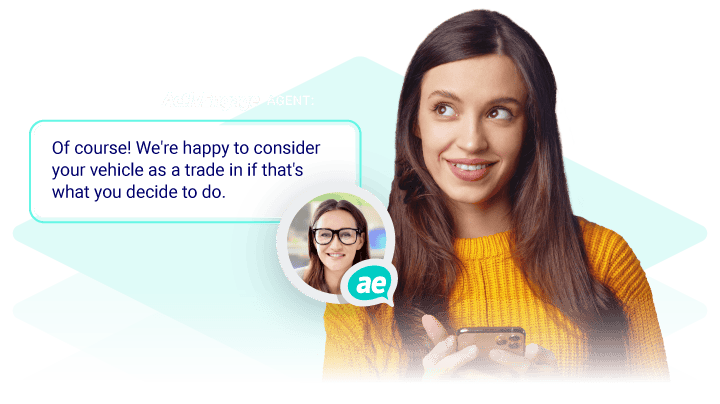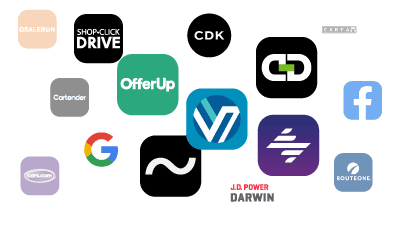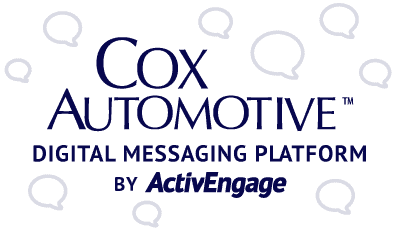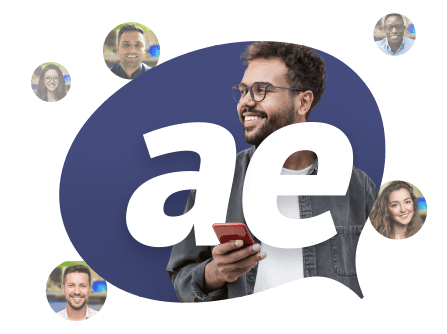Brian Ankney: Welcome to the Autosuccess Executive Spotlight. I’m your host, Brian Ankney. Today my guest is Ted Rubin. He’s the President and CEO of Active Engage. Welcome Ted!
Ted Rubin: Hey, thanks. I’m glad to be here!
Brian Ankney: Cool, well let’s talk about the trends that you’re seeing right now. What trends are you seeing in dealer to consumer conversations?
Ted Rubin: What’s changing? Well, I think that there’s been a lot of conversations obviously over the years that have been digitized and they went from email early on and we’ve been around for about 15 years. We were one of the first in the industry actually, the first to do actually managed services in the industry, so that’s been about 15 years and we’ve seen the conversations matriculate, become much more savvy. The customers have more to expect early on as we were talking about earlier.
Ted Rubin: Early on customers were just verifying we were actually like a person and not that they were just talking to a machine, so they were asking us about the scores in the baseball game the night before or other things like that, like what the weather’s like and stuff just to make sure that they were talking to a live person. They wanted to talk to somebody live. But as they got more familiar with it, as they got more accustomed to interacting with dealers on their websites in that way, the questions have become much more pertinent.
Ted Rubin: The conversations are more about accommodating the customer. A lot of times the customers are asking questions that they’re not exactly sure what they’re driving to. They have an idea of what they’re trying to accomplish – they’re not physically in the store touching the car, so they do need someone who can actually guide them through the conversation. We’ve had so many conversations that we ultimately know generally from the context where they’re trying to get to and what they’re trying to accomplish so we can shortcut that and bring them to a solution or to an answer much more quickly just simply because we understand what they’re driving toward.
Ted Rubin: There’s a lot of required interaction during these conversations. We’ve found more recently is customers aren’t just going online to just gather pure information, [but] they’re looking for an advocate, they’re looking for someone to engage with, someone who can help answer questions about the process, you can make them feel good about the process of buying a car and about the car that they’re buying or that they’re interested in buying.
Ted Rubin: So what we’ve seen is this migration from early on where it was “I don’t really want to search around the website to get data so I’m going to ask you about data” and now what we’re finding is that they’re actually coming online if they’re interacting because the websites have made it a lot easier to gather data and what they’re really coming online to do is to actually have interaction and ask questions about “Do you like the car? What do you think about this versus that?” They want interaction.
Brian Ankney: Are you saying like somebody comes on and they say “I’m really looking for a pickup truck but I haven’t decided between this one and this one. I like to go surfing and fishing but I’ve got two kids. Which one of these would you recommend?”
Ted Rubin: That’s right. Yeah, they’re looking for recommendations a lot of times. Not exclusively. They’re still asking about data a decent amount but they’re asking about recommendations. They’re asking about how the process is going to work. They want to feel comfortable so you have to give some empathy. It has to be a human conversation. We want to humanize the conversation so that the customer is at ease about it. Buying a car is tense and it still takes a long time to buy a car and you’re in front of someone at the store who is an expert and who’s done this and a lot of times customers.
Ted Rubin: I think dealers have gotten much better about being very endorsing of the customer experience and understanding that customers have this tense kind of tight interaction and that it feels adversarial so they want to ease the pain of that. But I think that it starts all the way when you’re online and so that the customer is looking for some compassion. They’re looking for some empathy. They’re looking to know that you have a pulse and that you feel for them in this process and the ability to recognize that you’re talking to another human being and that they understand the trials and tribulations of what you’re going through as you’re migrating through this process and making you aware of that.
Ted Rubin: It really helps to ease a lot of the angst with that and it does motivate the customers to want to go to that store and to buy from that particular dealer more than just “You want the data? Here’s the data, I’ll give you the data.” And it’s like talking to someone in the store. Most salespeople, most great salespeople are quite animated and they’re quite engaged with the customer. And that doesn’t mean you don’t have to do it online and that even though you’re not looking at the customer necessarily and not seeing them, they still want to feel like you’re really a part of this process and that you’re engaged with them.
Ted Rubin: It has a huge impact on their psychology when they’re looking to help motivate them to keep moving forward and then also to continue through with the dealer that they’re talking to.
Brian Ankney: That kind of surprises me a little bit. I would have thought that most of the customers were asking: “Do you have that car? How much is that car? What’s my payment on that car? How much can I get for my trade?” I hadn’t really thought about guiding them to which car or which trim level. I mean, do you actually see people that come on looking for a four-door car and then decide that they need a four-door SUV or a pickup truck? Do you see much of that where they switch models?
Ted Rubin: I don’t know that they switch drastically. I don’t know that they’ll switch from a four-door to a small sports coupe, but that happens too. It depends on what happens during that engagement. It’s about asking questions and really hearing what those answers are. More to the point, I think, of what you’re asking is that to gather “What’s the price or what’s the payment” or “Do you have the car?” I think that website providers have done a great job of making all of that come right to the front and present on the website.
Ted Rubin: I think that consumers are getting savvy with the fact that, okay, what I’m seeing for the most part is close to accurate or pretty accurate. As I’m going through the actual sales process, which you can now do significantly online, then I’ll get down to the meat and potatoes. I understand that I have to have credit if I’m going to buy it on credit or if I’m going to get it through lease.
Ted Rubin: Those questions, they certainly still happen, but they’re not as prevalent as they used to be. What is prevalent when you’re talking to someone is, “I’m looking for a four-door that’s going to accommodate these things. Can you tell me which one you have that’s the best in that area?” Or “I’m looking for this model, but I want something with a little bit more luxury or these types of features” and we can help guide them specifically within that model range to that.
Ted Rubin: Sometimes they just say “I need a car and I have X amount of dollars to spend and can you recommend something that you have on the lot?” We’ll be able to navigate the inventory for them to be able to start presenting cars. We also give them options so they can ask for a specific car and we’ll give them an option for one or two other ones that may be in line and they can say “Yes, that’s what I’m interested in, all of these, or no, I want to stay focused in one area.”
Ted Rubin: That helps to focus the customer too. If you make a presentation to a customer, it’s no different than selling in the store. If you make a presentation to your customer and they accept other alternatives, then you know what breadth you have with them that you can navigate around. Maybe they’re not so close to the sale yet. You want to be more interactive about what’s their process and what’s their timeline.
Ted Rubin: If you present some other things to them, they’re like, “No, I know I want this vehicle.” They’re closer to the sale. You have a much narrower path. You want to start talking about moving them forward in that process into a digital retailing tool if they have one on the website or specifically getting into the store to meet a particular person so that they can go further down that process because they’ve nailed that down.
Ted Rubin: Now it’s just about endorsing, not necessarily that particular car that they’ve picked as opposed to giving them some breadth and saying, “Oh, I like all three of these and all of these would fit. What is it more that you’re trying to achieve with this car? Is it price? Is it size? Is it something that’s brand new that hasn’t been owned before?” There’s a lot of questions. There’s a lot of interaction and a lot of questions to ask just like in the store to be able to do the best job for the customer.
Ted Rubin: The better job that you do for the customer, the more successful you are in the conversation, the easier the process is for them. That’s what you’re trying to accomplish because if it’s easy for them, they’ll buy from you. If they feel like it’s going to be complicated, difficult, if they feel like you’re uninterested in them, and it’s just very sharp and it’s a data only thing, then they’re not necessarily going to be buying from you because there’s nothing tying them to you.
Brian Ankney: It sounds like getting them engaged with the person that they’re communicating with online is important. How do you support the transfer to a digital retailing tool? That’s probably pretty simple, but to take them actually to coming into the dealership, how do you help to support that transfer?
Ted Rubin: Even for digital retailing, it depends. We have to build these integrations with these digital retailing tools. We build deep into these tools so that we can tell what’s going on with the tools so we know where they are in the process. We know what they’re doing. We can actually answer quite specific questions about what’s happening in the process with where they are in the digital retailing tools.
Ted Rubin: Also just migrating someone into a digital retailing tool. A lot of times you’re in a conversation with someone and you start asking questions and they’ll say “Can you tell me what it’s going to be for me? What’s my monthly payment going to be?” You can go “Well, I can start taking you through that process. You don’t have to do anything, but I can start taking you through that process if you like.” Then we can just organically migrate someone into a digital retailing tool. A lot of times I think there’s a mistake or a misunderstanding maybe of how digital retailing tools get used sometimes because certainly there are people who go online now and they know that they exist on dealership websites and they’re like “I’m just going to go do it that way!” which is terrific.
Ted Rubin: But there’s many, many more times where you’re just speaking with a customer and again it’s just like being in the store. That’s the experience we’re trying to replicate: being in the store. Give a similar experience because they can’t touch it, they can’t feel it, so you’re trying to substitute through conversation and maybe video or pictures or other things that we can do with the messaging piece so that they get a premium and similar experience and enhance those other imaginary or senses in their mind, their perception of what things are because they can’t actually physically touch the metal, feel how cold it is, feel how sharp and nice and new and clean and all those things that it is.
Ted Rubin: So you want to be able to do those things. As you’re navigating through a conversation you would just say “Do you want to go to this step?” and if they do then you can start moving them into digital retailing. Whereas someone who came online like that, they’re still preliminary, they won’t click on digital retailing because they’re like “I’m not there yet” but if I’m talking to you and I said “Oh but I can give you this additional information but I need to take you a little bit further, is that okay?” Then you’re getting the okay from them and they’re asking to be put through that and that’s where you really I think have a tremendous amount of success.
Ted Rubin: And then moving them into the store “We like to have a specific point of contact, names, you know, days even that we can assign people to meet with an individual” or look for an individual even if it’s a greeter at the store. Better if it can be an F&I manager because they’ve gotten through the digital retailing piece or a salesperson or a sales manager and they just have to be there.
Ted Rubin: I think that the process in the dealership should be “Hey you need to come out and just meet this person and shake their hand and put them with a live person.” That small 10 second experience is everything to a customer when they’re walking into a store and they’re unsure of exactly how things are going to go to feel like “Oh this is exactly what they told me it was going to be. These people care about me, they’re paying attention, and it did follow through the way that I was told when I was online.” That has a huge impact on customer service, your ability to close the deal, the satisfaction that the customer has with the way that it all transpired and your success in actually completing a transaction.
Brian Ankney: When you’re communicating with them online you’re really providing them with the same experience that they would have if they were sitting across from a salesperson. You’re guiding them through the steps of the digital retailing process, answering questions along the way, almost identical to what would happen if I was a salesman and you were buying a car from me and we were sitting here doing it together right now in person, right?
Ted Rubin: Yeah, I think that’s what we’re trying to replicate. We’re trying to actually be even better than that sometimes…
*both speakers laugh*
Ted Rubin: … because the one thing that we do get is we’re sitting at a computer so we have access to all of the data. We take in all kinds of data points about “Why is your dealership special?” When we’re onboarding a dealer “Why is your dealership special? What’s unique about it? What offerings do you have? What does it look like? What’s the surrounding area? If we have to give directions, do I tell them to turn right on 5th Street or can I tell them to turn right at the Starbucks?” Things like that.
Ted Rubin: We want to understand who our dealers are, why they’re special, what they do that’s helpful for a customer. Are they about price? Are they about warranties? Are they about tires for life? What is the thing that they specifically stand on and what matters to the dealer in their community? Being able to convey all that and then we have access to all the vehicle data.
Ted Rubin: Not every salesperson can remember every aspect of every vehicle but if we’re in messaging with someone then we can look up any vehicle and we can know what the specs are on that vehicle and what’s on that vehicle going back years. It’s nice to be able to… We do get a lot of questions that are “I’m interested in this truck but I need to know how long it is because I need to know if it’s going to fit in my garage.” We have that at our fingertips and our reps are looking at all the data and even if the dealer is doing it themselves, so if they’re not contracting with us to actually handle the conversations and there’s people in the store like the BDC doing that then our console gives the agents in the store the ability to see all this information and to be able to access all this data right so that they can be as effective as we are at answering those kinds of questions and bringing all of that to the forefront to make sure it gets communicated to the customer in an effective way.
Brian Ankney: Cool. Let’s move around to the back of the building or the side of the building, depends on the dealership. Let’s talk about service. How does managed messaging help the service department in the dealership?
Ted Rubin: Well I think there’s a lot of ways. One of the obvious first ways is 24/7 [availability] so people think… I did it the other day, I was like “I have to take my car and I forgot to do anything about it today, the dealership is closed.” So if I can engage through messaging on the website or through texting or whatever to be able to just say “Hey I want to make an appointment, can I do that?”
Ted Rubin: There’s someone there who has access and they can actually see the appointment schedule, the real schedule, even offer different certain primary types of services that they know that are consistent with customers and say “This is what this is going to cost us, how long it’s going to take, these are the things that are going on.” then that’s really an effective way to not only assist the customer but alleviate a lot of the calls that come in at 7.30 in the morning the next day because everybody’s like “Oh I woke up and I thought about this last night after you closed and I gotta make that appointment” so we’ve seen where there’s so many calls coming in that it’ll just peg the phone system and you want to be able to get to all the calls that are coming in because there’s just not enough people to handle them.
Ted Rubin: So this way you can advertise this to customers, they’ll get familiar with it and we have interactions with most all of the service scheduling tools so we know not just what the schedule is but if it’s a transmission replacement we know how to schedule that compared to like an oil change and we can schedule that and have it be exactly the right time for the customer and for the dealership to show up and it’s an easier way to be able to accomplish the appointment setting or verifying if your car is done so you can just go online and go “Hey is my car done” and we can answer a lot of those questions about it.
Ted Rubin: I think that also just the mere fact that it does alleviate that stress on the phone system is a very big deal. Plus we do things the same way on a consistent basis so we’ll get with your dealership in the same way and we’ll identify what do you sell and what are the things about the way that you want to handle service and how do you want us to communicate things the same way you would explain it to a new ASM on the floor and so because every conversation is written, every conversation is being managed by our team. We make sure that things are consistently done in the most effective way so we’re evaluating all these conversations.
Ted Rubin: We’re making sure that things are being done correctly but also saying “Okay well did the customer stay engaged, did they not stay engaged, did they do what we asked them to do or did they segue off to something else?” so we can continually improve those and that’s why the average ROI that’s made from one of our messaging reps is about 30 percent higher than the ROIs that would normally be done on the website and it’s even about 10 percent higher than the ROIs that would be made if they had called into the store.
Brian Ankney: Wow, wow, that’s 30 percent’s a big number. It’s a big number. So having somebody there to help you or hold your hand through the process makes a tremendous difference. Wow.
Ted Rubin: Yeah, I think it’s all about this human touch and about the interaction with another person and it’s about all this stuff, anybody who’s been in sales for a long time, it’s about relationships, right? It’s like building that relationship, making you comfortable with me selling you something. If you’re not comfortable with me selling you something, you’re always going to be at odds with me, you’re not going to believe me, you’re always going to have another question, you’re always going to have some angst about the relationship or about whatever I’m telling you. But if I can make you at ease with me, make you feel comfortable, make you feel like “Hey look, I’m interested in your success in this transaction, you getting what you want and making sure that your questions are answered. If I can do that, then you’ll have trust with me and then I can help you navigate this pretty difficult transaction with much more ease and much more confidence and therefore you’ll want to continue all the way through that process.”
Brian Ankney: I guess that makes sense. It has to be a much better customer experience than ring, ring, ring, like six or seven rings. Oh yeah, transferring to service and then you get to service, ring, ring, ring, and then you leave a voicemail. That’s right. And then maybe somebody calls you back, maybe they don’t, so you call back again and by that point I’m probably not looking to add more things to my RO.
Ted Rubin: I’m not in a good mood. Well, I mean you’re creating an adversarial relationship. So think about the temperature, just think about the body temperature of the person who’s trying to make an appointment and can’t get through and can’t get in and it takes them several times and every time that they dial and something doesn’t happen.
Ted Rubin: And it’s the same on the sales every time that they ask a question and all they get is another question back or they don’t get the answer that they’re looking for or they get a bot who’s just not trained to understand what’s going on and it’s not asking a question then …if you had a thermometer that was in that customer’s mouth you could just watch it rise.
*both laugh*
Ted Rubin: You’re just pissing them off as you go. So that’s really the goal. I think you and I talked about this a little bit earlier that originally 15 years ago when it was primarily just chat and it didn’t have to do with messaging across the board didn’t have to do with texting and other things that were going on then you know there was a lot of people who were just “
I don’t want to navigate the website to find the data” and websites were more complicated and so they would interact with chat to be able to help you find the thing that you were looking for and that still happens but not nearly as much.
Ted Rubin: More of what’s happening now is they’re looking for this advocate like that’s what we want to be. We want to be the advocate and so they’re looking for this person who can help them more understand the process and be on their side. They want to feel like you have an interest in them, that you want them to have an easy time in this process and that you are trying to help them. That’s what you’re there for. If they don’t feel that, or if they feel like you are just a resource for data or if they feel like you’re just there to take information and someone else who’s got the data can contact you later yeah well then they’re just going to disengage or they’re going to put up a wall or you’re going to have a lot more problems interacting with that customer and it’s going to make navigating that sales process much more complicated.
Brian Ankney: We have another brand that Babcock’s called The Buzz. It covers all things EVs and it you know EVs are touching the motorcycles and the power sports from our motorcycle power sports news it’s touching the fleets from our fleet equipment. EVs are here. How many of your conversations are touching on EVs and are they more educational or are they more “Do you have them?” or like what does that kind of look like?
Ted Rubin: Well I mean a lot of the conversations I mean right now the conversations about cars are “Do you have them?” so as much as anything you know that that’s pretty common so I don’t know that separating the two that I can separate the two just because of the environment at this particular point in time but what I can tell you is that that there’s so many manufacturers now that have EVs or have them coming that it’s more about looking at an EV as like a new model in the lineup of the vehicles that are there they’re not specifically saying well how does an EV work or you know sometimes I’ll ask questions like “What do I need to be able to purchase this car? How do I charge it? What do I need to put in my garage?” and other things like that so there are some questions around it like that but we don’t really have to get that much into the detail.
Ted Rubin: I mean you’re looking at a much more savvy consumer I think in general and I think the ones that look for EVs are even more savvy just typically because they’re researching and trying to find out because it’s still well into development of EVs but it’s still newer to the public so the people who are desirous of those things and looking for those types of vehicles they’re capable of doing more research about it so the conversation has become more about “Well I’m just interested in this vehicle as a new model at this particular brand – can you tell me a little bit [more] like what are the features of it or can I get leather seats or are they leatherette or can I get different features like a pop-up display or can I get different types of lighting?” or other things like that.
Ted Rubin: So it’s more about the specifics of the vehicle in the same trend than it would be if any new model came out than it is specifically about the EVs. Wee just do see that there’s a lot more interaction about EVs but it’s just because of the excitement of new model lines which are these EVs across all the brands that there are.
Brian Ankney: So it’s more questions about you know “Is it comfortable for two adults in the back seat?” or “Can I get third row seating?” It’s the same questions that every- it’s the same question just just it’s just a different motor right?
Ted Rubin: It’s the same question. Right! You know, that’s exactly correct.
Brian Ankney: These days video is everywhere you know how are you using video in your business today?
Ted Rubin: Well we released a product just recently that’s called MyDrive and I think it’s a spectacular product to be used along with the messaging that we have for the stores on the websites and what this tool does is… create that excitement, as we talked about earlier, about being in the store and kind of you can’t touch the car and you can’t feel the car and things like that so what we’ve done is that from the chat window itself that the consumer is looking at so as we land on a car for them then we can slide out a video player window from there so it’s not covering the website and it’s not taking up your entire screen but while you’re in the communication with the rep that you can actually watch a test drive of the video or watch content from the manufacturer from the dealership you know whatever that we can place into this player content that’s attached to the chat window.
Ted Rubin: And the goal there is number one we don’t want to disrupt the conversation because ultimately we want to be able to get through this conversation and the customer wants to get through the conversation get the answers they’re looking for but we do want to get the customer excited about the purchase just like they were in the store.
Ted Rubin: So you know there’s something [special] about looking at the cars that have just been cleaned and washed and they’re sitting on the showroom floor and they’re all shiny and they have the lights on and you go up to them you’re like “Oh that’s awesome! and you can get that feeling with a lot of the video content that’s out there that’s that’s why they have commercials right you know you watch these commercials like “Oh I really want to get that car!” so we can put all of that content now into this video player that is actually a part of the messaging window and we can slide it out and we can have the customer watching that and at the same time still directly interacting with the chat without disrupting that.
Ted Rubin: So it gives them that or or we expect that it’ll give them that excitement they’ll be watching the car that “I’m going to buy this car and look at all the cool stuff that it does!” or “Look at the inside or look how much room there is or how fast it is or yeah I’m going to have to go down that mountain road” or whatever maybe so yeah that’s the goal of it is to really bring that into the conversation and give them something that they can watch and that can get them excited but it also shouldn’t be all consuming where it’s actually disrupting the conversation to the point of where it’s extending it for a long time or taking them out of it.
Ted Rubin: You don’t want them to lose track of what they’re talking about because they want to get through it so I think it’s a great tool that we can use. We can even get it to be specific to like individual dealer groups and other things like that where they can have their specific content that we’re able to show whether it’s relative to the store or relative to other areas of you know the dealerships that they have that they want to promote to the customer in a way that also gets them excited or gets them very aware of how they’re going to interact with the store and how things are going to go and that’s what you want right? You want that customer like we talked about to kind of have that faith in it, that trust.
Brian Ankney: Yeah I mean the video definitely gets you emotional I mean that’s that’s why manufacturers don’t have like you know just a bunch of slides of what the cars look like on their commercials right that’s why the cars it’s yeah it’s doing the mountain road or it’s running down the beach or it’s you know slowly climbing a rock…
Ted Rubin: It’s always somewhere where you want to be right?
Brian Ankney: Yeah it’s it’s never like to pick up your kids after school that’s right you never see that. That’s the Allstate commercial where the lady wrecks or something right but they’re not advertising the car.
Ted Rubin: That’s right – oh that’s funny!
Brian Ankney: Well, what what what other ways are you using video today?
Ted Rubin: We have another product that we’ve had for a while but it’s been enhanced and kind of beefed up a little bit and it’s a two-way video so you’ll actually be able to you know have an interaction with a live agent and you can see the agent the consumer can either block themselves or allow the agent to see them and there can be an interaction that can be recorded as well on the agent side not on the consumer side but so the agent can show the store or show the lot or you know talk about the interaction and anything that the agent is doing you know can be actually shot with their camera on their phone or whatever and recorded and then either stored for a use at a later point or you know use for training and other things like that as well.
Ted Rubin: There’s not a lot of you know we’ve had two-way interaction for a while and it’s just a little early for consumers to really want that we’ve done a bunch of tests we’ve done tests with some of the manufacturers and even some of the distributors and there’s been long conversation about ”Ooh this is what customers want” and you know we’re not seeing that heavy desire there right now but I think there is a place for it and I think that as digital retailing kind of moves a little bit more forward like I foresee that you know where this is going to get used which is why we’re kind of putting it out there. It is going to be a little bit more maybe you know with some of the bigger sites that are out there it’ll get used and I also think it’s going to get used in F&I right.
Ted Rubin: Again, not so that the consumer necessarily wants to be seen but they may want to see your F&I manager so as you’re going through Digital retailing you know we can transfer it directly into the store and transfer it directly to an individual in the store so we can transfer a customer that’s going through the DR process if they’re really significantly through it or need to be speaking to someone with more detail because of some complexity in the process itself then we can transfer it to an F&I manager that’s in the store and they can take it over and the consumer will be sitting across the desk from the F&I manager in the store right and that person will also have the same access that we do to tell where they are in the process what they’re doing.
Ted Rubin: The DR tool itself, because we have these exclusive arrangements with different DR tools so we’re pervasive throughout Cox and obviously we’re on autotrader and Accelerate is one of the products that we interact with quite deeply like Darwin, ShopClick Drive for General Motors … you know we’re essentially exclusive for them and so we have very deep interactions with these DR products so that the F&I managers will know through the conversation and can interact with the customer and then these DR products will be giving them right to their DMS exactly what the customer is doing and you know how they’re making it through the process and what the details of that transaction are so I think that that’s quite significant to be able to offer that and we could be a little bit on the early stage of that but I think that some you know progressive dealers are going to want to make that offering and there will be customers who will take people up on that yeah
Brian Ankney: Well you know we have a saying at Babcox that “We’d rather be two years too early than five minutes too late” yeah and so it’s always better to get there early. yeah it’s always better to get there early than to try and catch up later. Well Ted is there anything else you’d like to share with our audience today?
Ted Rubin: I think you know the the one thing that you know going back to the very first question that you asked I think that what’s important to know at least from my perspective and our perspective that can engage about interacting with customers is you don’t want to stray too far from you know the original process itself right of understanding how to sell a customer and that’s to build a relationship so you have to get interactive with the customer you have to be real about what you’re doing.
Ted Rubin: You have to have interest in the customer and you have to have empathy for the customer so that you can build this relationship. If there is no relationship you know then there’s no reason for this customer to buy from you. Why would they want to do that? You know, anybody who’s buying from anyone is because they feel like there’s a relationship there, even Amazon which is an off-the-shelf type of product, they have a relationship you know with Amazon because they have a feeling they understand how it works. They feel comfortable buying in there sometimes and they’ll pay more for products because it’s delivered, it’s freeing, it seems like it’s easy.
Ted Rubin: They can research a lot of things all at once so it is significantly about the relationship and buying a car is just a complex process and there’s so many companies and people that are trying to make it simpler and faster but you know it is still inevitably a long and complex process with a lot of rules and a lot of regulations that are regional as well as federal and what the customer really needs is to be comfortable and to get their questions answered and to feel like the interaction that they’re having is on their behalf.
Ted Rubin: I think the best way to do that is to build a relationship and to build that interaction through trust and through answering questions and being empathetic to the customer and you know that’s what our goal is with all of the customers that we interact with on all of the different sites that ActivEngage’s on.
Brian Ankney: Well, thank you Ted!
Ted Rubin: No thank you it was great being here and I really enjoyed my time!
Brian Ankney: It was a good time yeah! Thank you for taking the time to join us for this AutoSuccess executive spotlight. I’m your host Brian Ankney today – my guest was Ted Rubin from ActivEngage. This episode is over the curb and burning gas unless it’s an EV.

